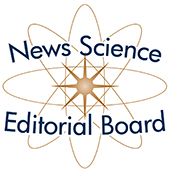Science News: Effects of Transcranial Direct Current Stimulation Combined with Neuromuscular Electrical Stimulation on Upper Extremity Motor Function in Patients with Stroke
Published April 28, 2022
Education Science News
 Submitted by: David Phrathep
Submitted by: David Phrathep
Edited by: Rebecca O’Bryan, MD
Wei YY, Koh CL, Hsu MJ, Lo SK, Chen CH, Lin JH. Effects of transcranial direct current stimulation combined with neuromuscular electrical stimulation on upper extremity motor function in patients with stroke. Am J Phys Med Rehabil. 2022;101(2):145-151. doi:10.1097/PHM.0000000000001759
Summary: This study determines the treatment effects of transcranial direct current stimulation (tDCS) combined with neuromuscular electrical stimulation (NMES) on the motor function of upper extremity (UE) in persons with stroke.
The study was a pilot-double blind randomized controlled trial with 26 patients with stroke onset of more than 6 months prior to the study. Each of the patients were randomly assigned to three groups: tDCS combined with NMES group, tDCS group, or the control group. All participants received one of the three protocols in addition to conventional rehabilitation, for a total of 15 sessions over 3 weeks.
The Fugl-Meyer Assessment UpperExtremity (FMA-UE) was used to assess sensorimotor function in each of the participants. This scale is an impairment based index that assesses motor function, sensation and balance as well as joint function in patients with post-stroke hemiplegia. This scale comprises 33 items. Each item is rated on a 3-point scale of 0-2 (total score range of 0-66). A higher score indicates better motor performance. The Action Research Arm Test (ARAT) is a standardized ordinal scale designed to measure UE disability. The ARAT has 19 items in four categories: grasp, grip, pinch, and gross movement. Each item is graded on a 4-point scale of 0-3 (total score range of 0-57).
From pre-treatment to one-month follow up, the combined tDCS and NMES group showed significant improvement on the FMA-UE (from pre-interventional to post-interventional, p = 0.01). The percentage of the group that showed minimal detectable change (over 3.2 points) was 55% for the combined group, 33% in the tDCS group, and 12.5% in the control group. Additionally, the ARAT showed the most improvement in the combined tDCS and NMES group (from pre-intervention to post-intervention and at one month post-intervention, p = 0.03 and p = 0.04, respectively). The study reveals that combining tDCS and NMES with regular rehabilitation may enhance UE functional improvement than regular rehabilitation alone in chronic stroke patients.
Comments: This study highlights the potential benefits in combining NMES and tDCS with conventional rehabilitation in the treatment and rehabilitation of stroke patients with upper extremity deficits. The combined tDCS and NMES adds another dimension of treatment options for this population of patients. The study allows for additive tools physicians can utilize to optimize and improve upon conventional rehabilitation.
Article of similar interest: Pruski A, Celnik P. The Use of Noninvasive Brain Stimulation, Specifically Transcranial Direct Current Stimulation After Stroke. Am J Phys Med Rehabil. 2019;98(8):735-736. doi:10.1097/PHM.0000000000001209
